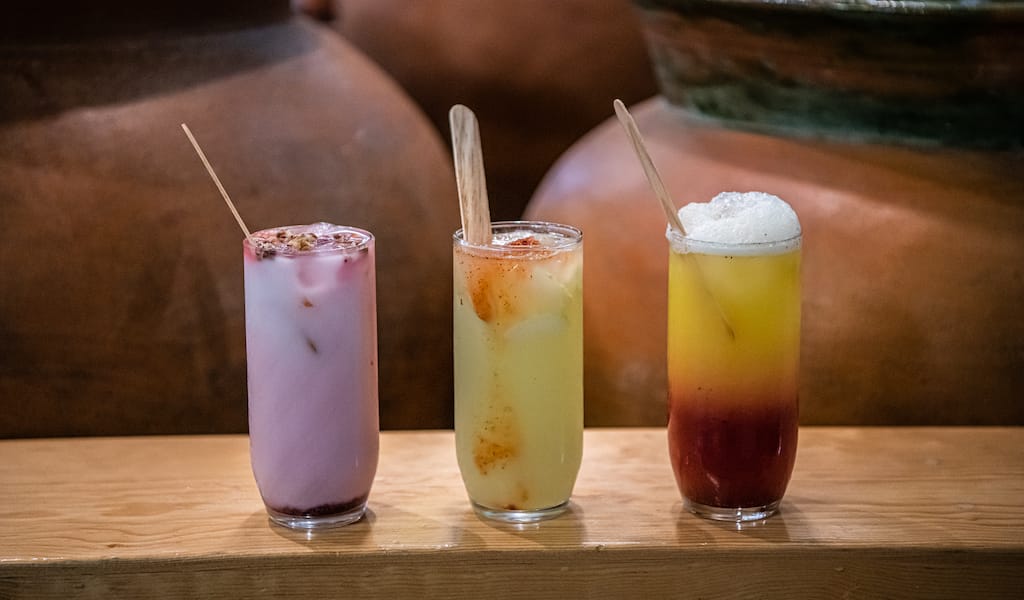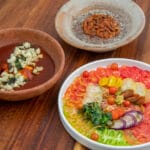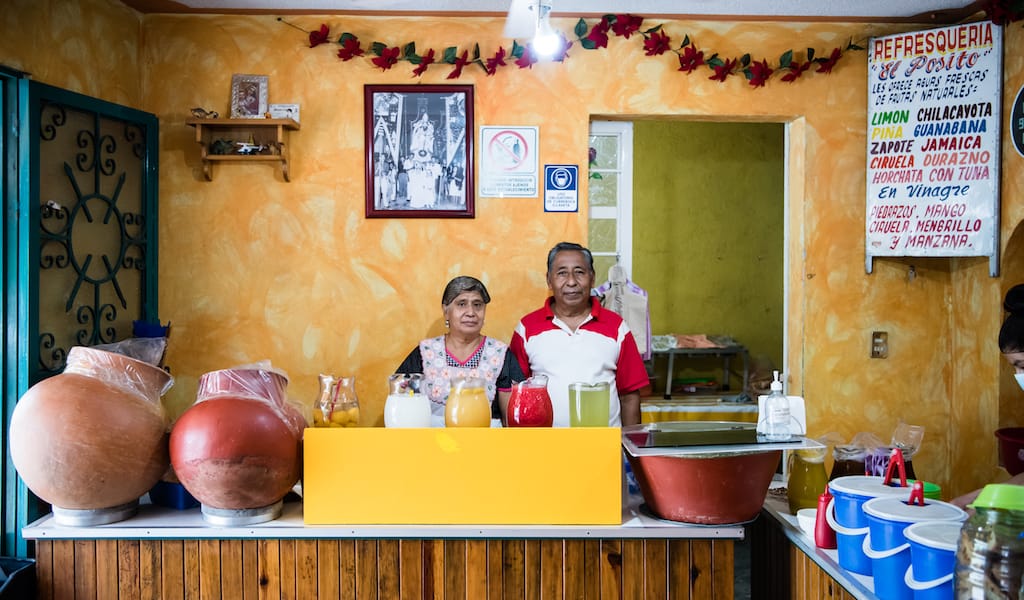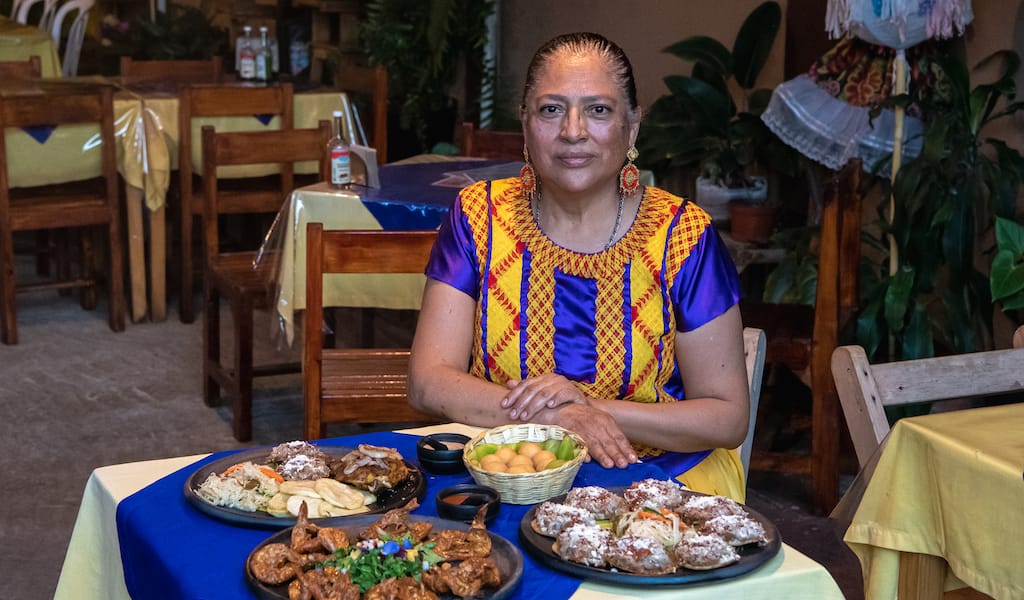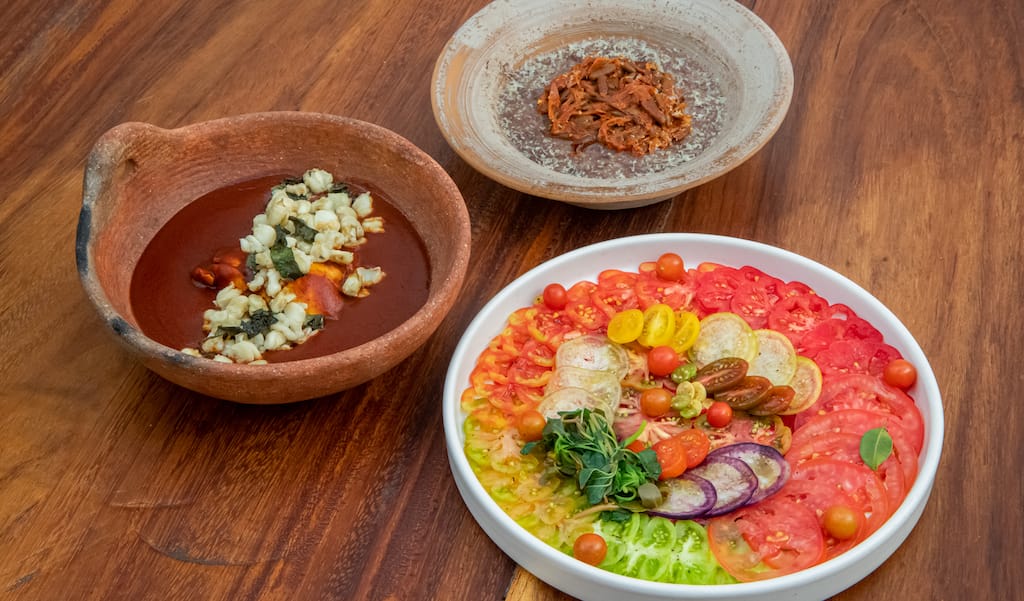I first met Socorro Irinea Valera Flores years ago, when Oaxaca was not yet under the spotlight of the culinary industry. As part of a high school project in which I had to map Oaxaca’s most “heartwarming” spots for food and drinks, I visited the iconic Aguas Casilda, a nearly 100-year-old storefront that has been selling aguas frescas (fruit-flavored water) to at least three generations of Oaxacan families.
The idea of fruit-flavored water might sound strange to foreigners, and unremarkable to most Mexicans (the beverages are common throughout the country, albeit with a more reduced variety). But in Oaxaca, aguas frescas – essentially a mix of fresh fruit pulp, plain water, and some sugar if needed – are synonymous with freshness and excitement, given the selection of different flavors made from the myriad of fruits that grow locally.
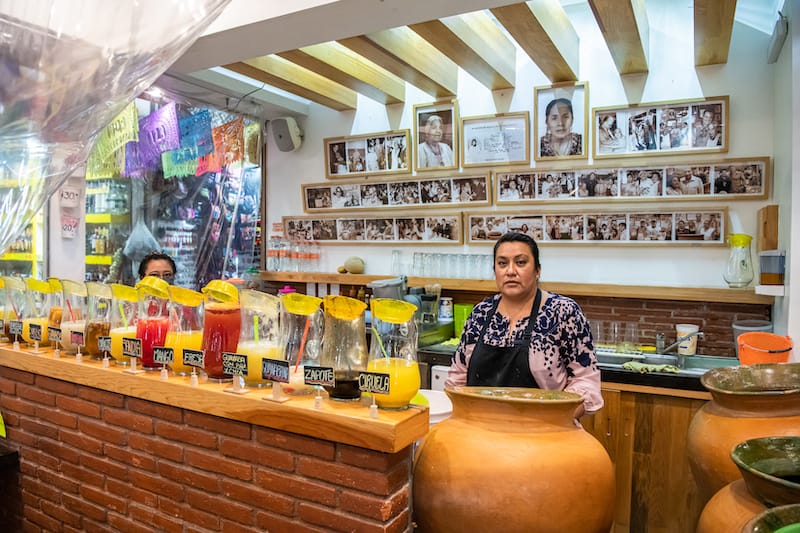
I clearly remember that, after explaining my homework, Socorro gave me a couple of huge glasses of agua de horchata con tuna (almond and rice water with prickly pear), insisting I needed to cool down. As young students, we found her generosity uncommon but kind and protective. “My grandmother always said that one should never deny anyone a glass of water, especially students,” she said back then – and still does. Channeling her grandmother’s generosity, Socorro’s horchata con tuna water took on a new meaning for me, its flavor imprinted deep into my palate’s memory.
Aguas Casilda was founded on October 15th, 1926, by Socorro’s grandmother, Casilda Flores Morales, age 16 at the time. The stall was the extension of a business initially started by Casilda’s aunt, a woman known as “María La Horchatera” (María the horchata maker), who used to visit the schools in 19th-century Oaxaca City. María sold horchata water mainly to office workers and teachers and would always give many glasses to the youngest students for free. Young Casilda followed her aunt’s example, but she decided to formalize the concept and set up a tiny stall on the square that later became the Benito Juárez Market.
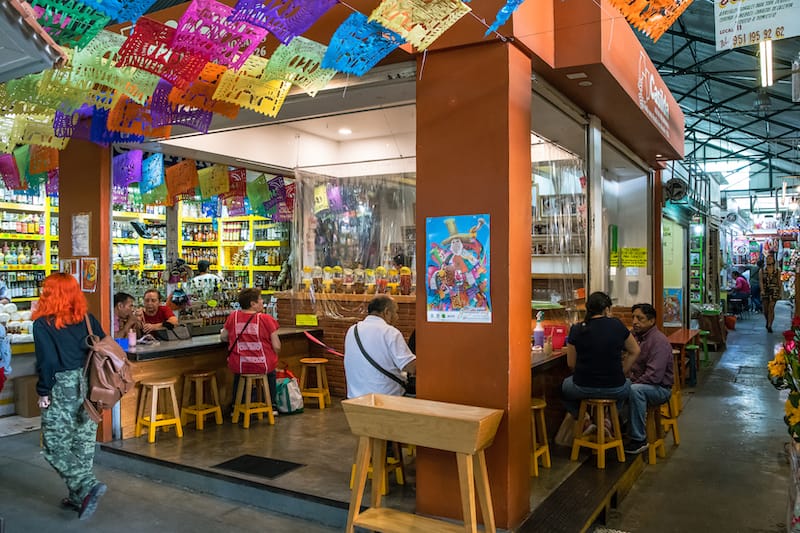
“Equipped with a wooden table, cutlery, glasses, fruits, sugar and some pre-made ingredients, my grandmother sold horchata with prickly pear, watermelon-infused water, and pineapple “beer,” explains Socorro, age 46. Back in those days, Casilda did not have an electrical outlet, blenders or more complex tools, so she took advantage of the tenderness of watermelon and prickly pear, smashing them with a fork. Then, right before serving, she would mix the watermelon with plain water, and the prickly pear with shaved ice and horchata water, in order to balance the heavier, milky texture of oatmeal with the tangy freshness of prickly pear. Little did she imagine that her creativity would give birth to Oaxaca’s most popular agua fresca, and would eventually evolve into the revered horchata water and prickly pear sherbet. “She didn´t mean to make a sherbet, she was only being imaginative and practical, as she needed to offer something more attractive for clients but still accessible and less time consuming in its preparation,” adds Socorro, who inherited her grandmother’s skill to innovate.
To this day, Aguas Casilda offers naturally flavored water made with a variety of seasonal fruits, such as orange, passion fruit, strawberry and mango. Other aguas frescas, however, have become Casilda’s signature flavors and are sold all year long, like squash water, horchata with tuna, watermelon, cucumber with peppermint, lime and chia seed, and the bright and hyper-fresh lime zest. Some other mixes are the result of Socorro’s imagination and popular demand, like lychee, peach with either pineapple or guava, apple with cranberry and fruit punch.

In order to honor an almost 100-year-old tradition, Socorro and her team still give the aguas frescas their finishing touches upon serving, like adding tiny squares of cantaloupe and pecan after pouring the horchata (just like the prickly pear, these little extras are a very Oaxacan twist to the traditional horchata) and sweeting the water by mixing the unsweetened pulp with a pre-made natural sugar syrup, depending on the client’s preference.
Despite Socorro’s “recent” incorporation as Aguas Casilda manager 20 years ago – after her aunt, Casilda’s daughter Maria Teresa Valera, passed her the torch – Socorro expanded the business to the next stall, doubling the space of the original. Here, clients can sit on benches and enjoy their fresh tropical drinks at a couple of glossy wooden bars. But behind all the reconstructions, the story of three generations rests on the wall behind the counter, in the form of framed awards and newspaper articles, old original family photos and copies that belong to Oaxaca’s state archives – such is the weight of Aguas Casilda in the city’s history. For that very reason, Socorro makes sure to preserve her grandmother’s quality standards, religiously preparing 100 liters of water each day, following a very established ritual.
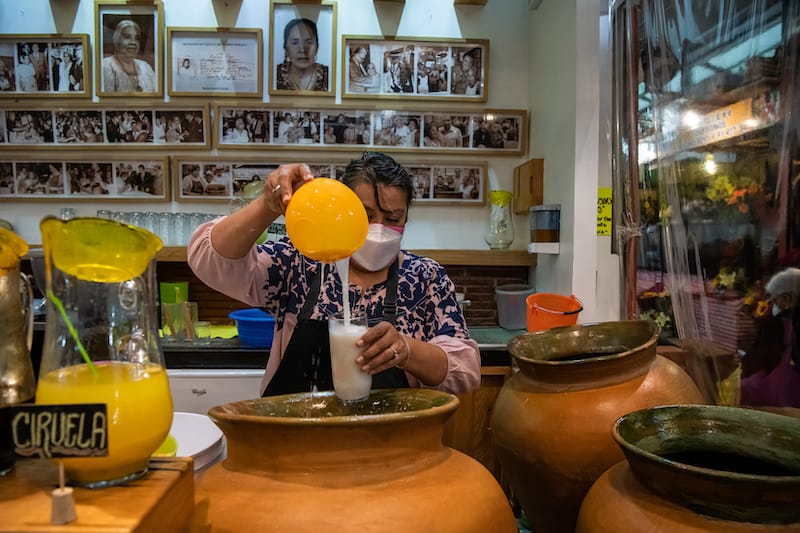
“Good water has to taste like the fruit that it is made from. It has be prepared from scratch every day so that it stays fresh and bright, naturally, without colorants or artificial flavor, without oxidation. All the fruits are washed and disinfected, water is filtered and clean, dozens of sealed 20-liter jugs are delivered to us daily,” states Socorro, aware that buying non-drinkable water is one of the most common concerns of locals and foreigners that wish to quench their thirst in markets or street stalls.
And although 100 liters of water daily is nothing compared to 100 years of serving agua fresca, the Aguas Casilda family makes sure to stay as sharp as if they had just opened yesterday. There is indeed a youthful vein that runs through all of them. Doña Casilda worked almost until the last years of her life, up until the late 1980s. When she was young, women were not allowed to attend to school. But somehow – nobody knows when or how – she learned to read and write.
“Perhaps her first client was a student who paid her with lessons. I like to think this is the why she loved students so much and even joined a lot of protests and demonstrations as an adult. Just like the fruits she loved, she always stayed sassy and fresh; the least we can do now is to follow that path she showed us,” says Socorro, giving us another couple of glasses of horchata con tuna, for old times’ sake.
This article was originally published on July 14, 2022.
María ÍtakaJalil Olmedo
Published on July 05, 2023
Related stories
August 20, 2021
OaxacaBack in our college days, in the mid 2000s in Mexico City, we spent hours talking with our fellow students about the foods we missed the most from home. When we, the “Oaxacan delegation,” brought up piedrazos, everyone in the room laughed. They could not fathom something with such a name – piedrazo literally means…
October 27, 2022
OaxacaAt the bottom of a quiet street in Colonia Reforma, a neighborhood located in the northern-central area of Oaxaca City which hides many of the city’s best-kept food secrets, we find Garnachas La Güera. While the area is characterized by its quiet, residential streets, this restaurant is a small paradise where joy, music and good…
April 18, 2022
OaxacaStanding behind the smoke veil rising from the hot clay griddle, Thalía Barrios Garcia roasts dozens of tomatoes of all shades of red with the confidence of a woman who has her future in her own hands. At the early age of 26, Thalía is the owner and head cook of Levadura de Olla, one…







































